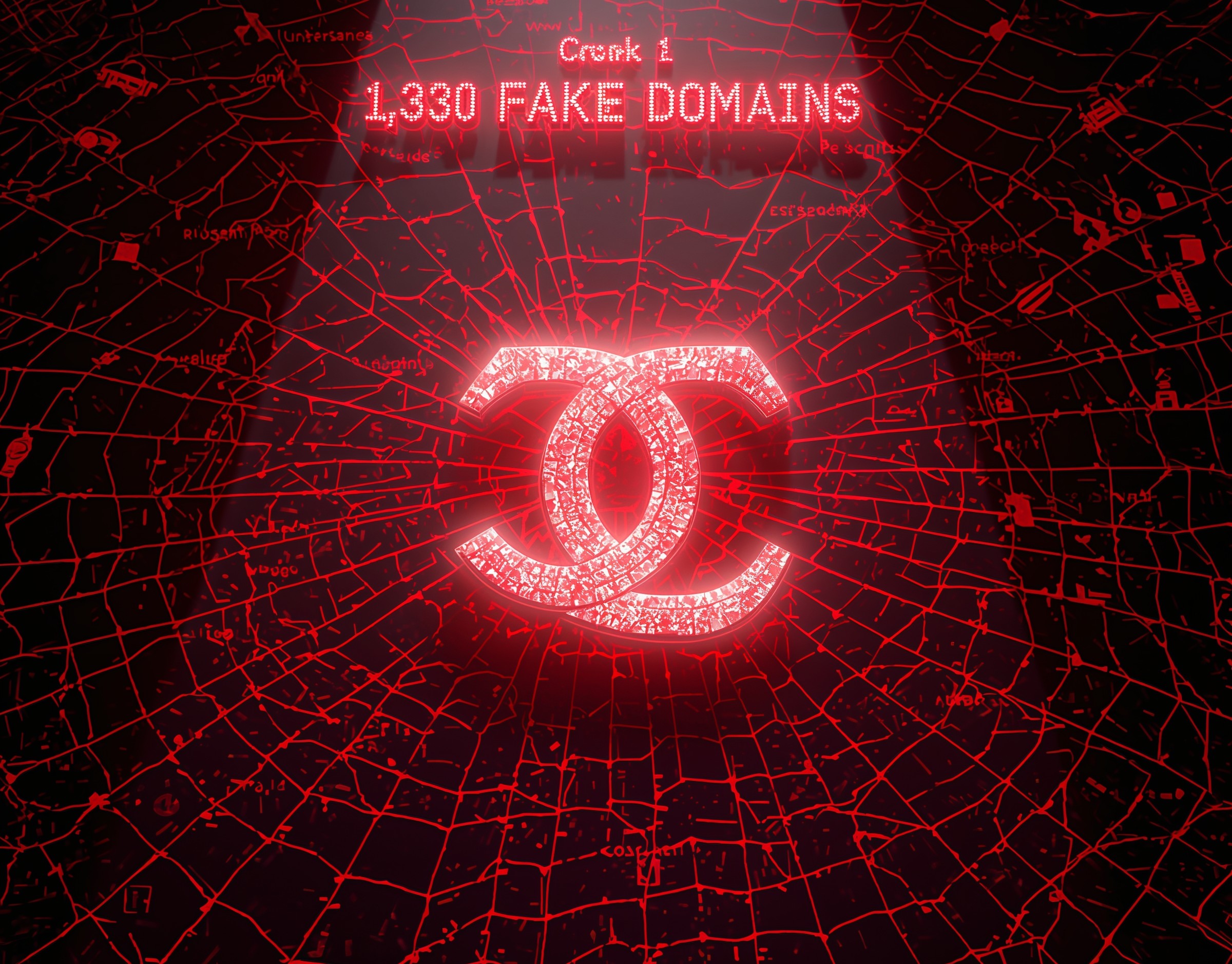Crooks registered 1,330 suspicious domains that target twenty-three luxury brands ahead of peak shopping. Therefore, the campaign aims to lure buyers to counterfeit storefronts and phishing checkouts. Consequently, brand trust erodes, payment fraud rises, and customer service workloads spike. Moreover, many domains look dormant today, yet operators can activate them during Black Friday, Cyber Monday, or regional holidays without warning.
Anatomy of the impersonation wave
Researchers at BeforeAI’s PreCrime Labs mapped 1,330 new domains from mid-August through late September 2025, and 1,213 of them mimic the examined luxury labels. Additionally, registrant data shows non-corporate emails and repeating identities, which suggests a coordinator or reseller behind multiple clusters. Notably, the largest spike happened on September eleventh and aligned with staging before heavy promotional periods. Meanwhile, naming patterns push “boutique” and “factory outlet” wording to sell the illusion of legitimate discounts and official clearance events.
Why typosquatting works against luxury shoppers
Typosquatting stays cheap, fast, and effective. Therefore, criminals spin look-alike names, add a padlock with turnkey TLS, and seed paid ads or social posts that funnel shoppers to fake carts. Furthermore, the promise of steep discounts fits common consumer pain points, so click-through rates remain high. In addition, counterfeit operations recycle product images and mix them with copied policies to create a short-lived sense of legitimacy. Consequently, shoppers who skim past the URL and trust a “secure” icon fall for polished copy, brand fonts, and professional images.
Exposure timeline and activation patterns
Many of the 1,330 domains remain parked right now. However, parked does not mean safe. Instead, staged domains let operators light up campaigns in waves, rotate infrastructure, and dodge takedown momentum. Consequently, brands can see bursts that last a few days and then disappear, only to reappear under a sibling domain with identical templates. In practice, that cycle confuses shoppers and slows investigations unless teams track registrar patterns and shared contact artifacts.
Risk to brands and consumers
Impersonation attacks hit both sides of the transaction. Therefore, shoppers lose money through counterfeit goods or payment theft, while brands lose reputation, search equity, and chargeback time. Moreover, fraud teams must prove negative, which wastes cycles during holiday peaks. In parallel, resellers can route payments through processors with high churn, so refunds rarely arrive. Overall, the result looks like a flood of customer complaints at the worst possible time.
Defensive playbook for luxury houses
First, register high-risk brand variants and the most abusable country-code TLD pairs for your best-selling lines. Next, monitor DNS for suspicious strings, registrar clusters, and reused emails tied to prior abuse. Then push rapid takedowns through registrar abuse desks with pre-built evidence bundles that include screenshots, WHOIS snapshots, and payment flows. Additionally, publish safe-buying guidance and a verified store locator that outranks fake sites on branded queries. Finally, arm social, support, and marketing teams with a single narrative so responses stay consistent during surges.
Enforcement and policy levers
When clear trademarks and confusing similarity appear, legal teams can pursue UDRP complaints through approved providers. Therefore, prepare concise filings that document the mark, the confusing domain, and the bad-faith use. Moreover, brands can escalate chronic offenders with synchronized notices to registrars and hosts, which compresses the attack window. In some cases, cross-border law-enforcement operations that target malicious domains show impact at scale, especially when coordinated with threat-intel submissions and registrar cooperation.
Retail-sector context
Luxury brands suffer disproportionate impersonation because scarcity, status, and high margins attract counterfeiters. Consequently, criminals focus on design houses that drive search volume and global demand. Additionally, when tariffs or geopolitics trend, operators seize the moment and push “outlet” storylines that tap into price anxiety. Meanwhile, social platforms and messaging apps amplify reach faster than brand teams can respond during promotional surges.
Action plan for brand, fraud, and security teams
Start with a near-term sprint. Therefore, build a holiday watchlist with exact brand names, common misspellings, and top product lines. Then feed the list into DNS monitoring and registrar feeds. Next, stage evidence packages and assign takedown roles in advance. Afterward, publish a shopper advisory on official channels that explains how to verify domains, check return policies, and avoid payment red flags. Finally, coordinate with marketing, legal, and customer service so messages stay consistent when dozens of look-alike domains go live at once.
FAQs
Q: How can shoppers identify a fake luxury storefront quickly?
A: Advise them to verify the domain against your official store locator, avoid wire transfers or gift cards, and compare returns and warranty terms to your canonical policy. Additionally, warn that “outlet” claims with extreme discounts rarely align with authentic stock.
Q: How fast can takedowns happen during holiday peaks?
A: Well-prepared evidence bundles and registrar relationships cut timelines from days to hours. Moreover, pre-approved templates and counsel speed reviews when dozens of domains activate at once.
Q: Does UDRP apply worldwide and to country-code TLDs?
A: UDRP targets generic TLDs and many new TLDs, while some ccTLDs follow their own procedures. Therefore, legal teams should keep a jurisdiction matrix and choose the most practical path per domain.
Q: What should brand teams tell cardholders who already paid?
A: Direct them to contact their bank, freeze the card if needed, and file a dispute. Furthermore, gather order confirmations and site screenshots to help issuers trace the merchant account and recover funds.
Q: Which signals justify fast blocking in corporate networks?
A: Block newly registered look-alike domains that combine brand names with “outlet,” “boutique,” or “official-store” strings, especially when the host uses low-reputation name servers or recycled contact emails.










